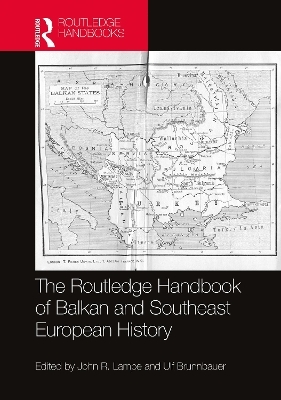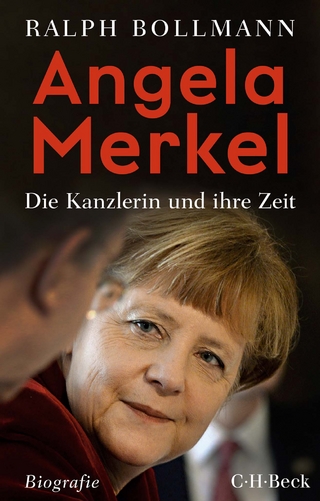
The Routledge Handbook of Balkan and Southeast European History
Routledge (Verlag)
978-1-138-61308-9 (ISBN)
Parts I and II explore shifting early modern divisions among three empires to the national movements and independent states that intruded with Great Power intervention on Ottoman and Habsburg territory in the nineteenth century. Part III traces a full decade of war centered on the First World War, with forced migrations rivalling the great loss of life. Part IV addresses the interwar promise and the later authoritarian politics of five newly independent states: Albania, Bulgaria, Greece, Romania, and Yugoslavia. Separate attention is paid in Part V to the spread of European economic and social features that had begun in the nineteenth century. The Second World War again cost the region dearly in death and destruction and, as noted in Part VI, in interethnic violence. A final set of chapters in Part VII examines postwar and Cold War experiences that varied among the four Communist regimes as well as for non-Communist Greece. Lastly, a brief Epilogue takes the narrative past 1989 into the uncertainties that persist in Yugoslavia’s successor states and its neighbors.
Providing fresh analysis from recent scholarship, the brief and accessible chapters of the Handbook address the general reader as well as students and scholars. For further study, each chapter includes a short list of selected readings.
John R. Lampe is Emeritus Professor of History at the University of Maryland, College Park and Global Europe Fellow at the Woodrow Wilson International Center for Scholars, Washington, DC. He is the author of a dozen books, including two editions of both Balkans into Southeastern Europe and Yugoslavia as History: Twice There Was a Country. Ulf Brunnbauer is Director of the Leibniz Institute for East and Southeast European Studies, Regensburg. He is also Professor of Southeast and East European History at the University of Regensburg. He is author and (co-)editor of more than twenty books, mostly on the history of Southeastern Europe since the nineteenth century, among them Globalizing Southeastern Europe: Emigrants, America and the State since the Late 19th Century (2016).
Introductory overview: premodern borders and modern controversies PART I: The early modern Balkans as imperial borderlands Overview: the Balkans divided between three empires 1. Ottoman Albania and Kosovo, Albanians and Serbs, sixteenth–eighteenth centuries 2. The Venetian- Ottoman borderland in Dalmatia 3. The Phanariot regime in the Romanian Principalities, 1711/ 1716–1821 4. Ottoman Bosnia and the Bosnian Muslims PART II: Nation- and state- building, 1815–1914 Overview: nations and states between changing borders and the Great Powers in the “long” nineteenth century 5. Nineteenth- century national identities in the Balkans: evolution and contention 6. Bulgaria from liberation to independence, 1878–1908 7. Croatian political diversity and national development in the nineteenth century 8. Montenegro as an independent state, 1878–1912 9. The agrarian question in Romania, 1744–1921 10. Slovene clerical politics, cooperatives and the language question to 1914 11. Serbia’s promise and problems, 1903–1914 12. The Macedonian question: asked and answered, 1878–1913 13. Austria- Hungary and the Balkans 14. Bosnia- Herzegovina under Austria- Hungary: from occupation to assassination, 1878–1914 PART III: The Balkan Wars and the First World War, 1912–1923 Overview: armies and occupations, peace settlements and forced migrations 15. Bulgaria’s wars and defeats, 1912–1919 16. After empire: the First World War and the question of Albanian independence 17. Greece from national expansion to schism and catastrophe, 1912–1922 18. Habsburg South Slavs in peace and war, 1912–1918 19. From Salonica to Belgrade: the emergence of Yugoslavia, 1917–1921 PART IV: Southeastern European states and national politics, 1922–1939 Overview: the interwar decades from parliamentary struggles and international pressures to authoritarian regimes 20. Interwar ideas and images of nation, class, and gender 21. Interwar women’s movements from the Little Entente to nationalism 22. Interwar Greece: its generals, a republic, and the monarchy 23. Bulgaria from Stamboliiski and IMRO to Tsar Boris, 1919–1943 24. The legion “Archangel Michael” in Romania, 1927–1941 25. Albania between Fan Noli, King Zog, and Italian hegemony 26. The Croat Peasant Party: from Stjepan Radić to Vladko Maček 27. Serbia, Kosovo, and Macedonia from revolt and resettlement to repression 28. Yugoslav identity in the interwar period PART V: Economies and societies, 1878–1939 Overview: challenges of change. Economic and population growth, social and cultural transformations up to World War II 29. Demographic growth: patterns and problems, 1878–1939 30. Financing economic growth and facing foreign debt, 1878–1939 31. Modern manufacture, state support, and foreign investment: comparing Balkan textile industries, 1878–1939 32. Neighbors into foreigners: the Greeks in Bulgaria, 1878–1941 33. Southeastern European overseas migration and return from the late nineteenth century until the 1930 34. Eugenics and race in Southeastern Europe 35. Sofia and Plovdiv between the world wars PART VI: From the Second World War to the establishment of the postwar regimes, 1939–1949 Overview: collaboration and occupation, resistance and civil war, regime change 36. The Albanian Communist Party from prewar origins to wartime resistance and power 37. Romania in the Second World War 38. The Usta š a regime and the politics of terror in the Independent State of Croatia, 1941–1945 39. Partisans and Chetniks in occupied Yugoslavia 40. An oppressive liberation: Yugoslavia 1944–1948 41. Greece from occupation and resistance to civil war, 1941–1949 PART VII: Cold War division and European transition, 1949–1989 Overview: communist regimes and the Greek exception 42. The collectivization of agriculture in Southeastern Europe 43. The Soviet factor in Bulgaria’s foreign policy 44. Enver Hoxha’s Albania: Yugoslav, Soviet, and Chinese relations and ruptures 45. Ceauşescu’s National Communism as National Stalinism 46. Yugoslavia’s third way: the rise and fall of self-management 47. Greece’s Cold War: exceptionalism in Southeastern Europe 48. Yugoslavia’s political endgame: Serbia and Slovenia in the 1980s 49. Changes of social structure from the late 1940s to the 1980s 50. Financing industrialization, 1949–1989: from foreign aid to foreign debt PART VIII: Epilogue Epilogue: Southeastern Europe after the Cold War 51. Yugoslavia’s wars of succession 1991–1999 52. From foreign intervention to European integration: Southeastern Europe since 1989
| Erscheinungsdatum | 21.10.2020 |
|---|---|
| Zusatzinfo | 2 Tables, black and white; 8 Halftones, black and white; 8 Illustrations, black and white |
| Verlagsort | London |
| Sprache | englisch |
| Maße | 174 x 246 mm |
| Gewicht | 1056 g |
| Themenwelt | Geisteswissenschaften ► Geschichte ► Regional- / Ländergeschichte |
| Geisteswissenschaften ► Philosophie | |
| Naturwissenschaften ► Geowissenschaften ► Geografie / Kartografie | |
| Sozialwissenschaften ► Politik / Verwaltung ► Politische Systeme | |
| Sozialwissenschaften ► Politik / Verwaltung ► Politische Theorie | |
| Sozialwissenschaften ► Soziologie ► Spezielle Soziologien | |
| ISBN-10 | 1-138-61308-8 / 1138613088 |
| ISBN-13 | 978-1-138-61308-9 / 9781138613089 |
| Zustand | Neuware |
| Informationen gemäß Produktsicherheitsverordnung (GPSR) | |
| Haben Sie eine Frage zum Produkt? |
aus dem Bereich


